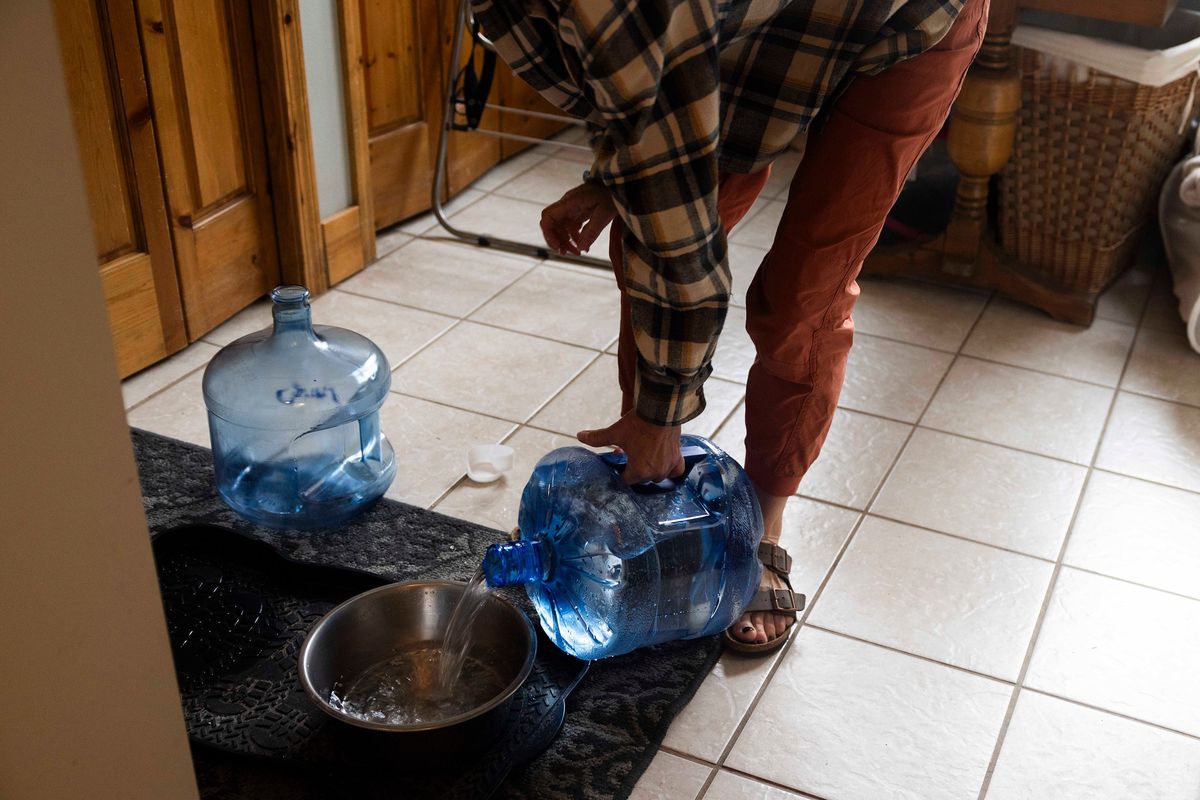Military testing reveals hundreds of drinking water wells contaminated with PFAS in WA

Hundreds of drinking water wells near military bases or other facilities in the state of Washington have been contaminated by per- and polyfluoroalkyl substances, or PFAS, according to a Seattle Times analysis of the past two years of test results published by the military.
So far, the military has confirmed the release of these “forever chemicals,” named for their pervasiveness in the environment, at 10 military installments in the state, many of them near the Salish Sea.
PFAS were detected by Department of Defense testing in 866 private drinking water wells, nearly half of all wells tested by the military in the past two years in the state.
Concentrations of the chemicals in 551 of the contaminated wells were above the levels the U.S. Environmental Protection Agency has proposed to protect human health. But nearly 430 of those fall below levels that prompt the military to take action, such as providing clean drinking water. Well owners are notified of testing before it takes place.
The data analyzed by the Seattle Times doesn’t include the results of tests taken before 2021.
The military is in the process of evaluating the risk to human health and the environment in the areas around the facilities as part of a cleanup process.
It is also preparing to implement the EPA’s final drinking water standard in the next few months, Pentagon spokesperson Jeff Jurgensen said in an email to the Seattle Times. “The Department is expanding ongoing investigations to determine where PFAS has migrated off-base above the proposed levels and working to determine whether public or private wells may have been impacted.”
For decades, U.S. military bases were obligated to train with firefighting foams containing these chemicals. PFAS-laced foams are especially good at putting out high intensity fires, stoked by jet or ship fuels.
In the human body, the chemicals may disrupt the immune system; interfere with hormones; increase the risk of prostate, kidney and testicular cancers, and high blood pressure in pregnant women; and harm the reproductive system, according to studies cited by the EPA.
The military in March began looking into the potential release of PFAS at more than 700 military installations and National Guard facilities nationwide. The Department of Defense released a report in September that suggests about 89% of the military sites where the use or presence of the substances had been detected so far are located near aquifers that serve as a source of drinking water.
According to an Environmental Working Group analysis, about 2,805 drinking water wells near 63 military bases in 29 states, are contaminated above the EPA’s proposed health standards but below the military’s benchmark to provide access to clean water. Roughly 1 in 7 of those wells are in Washington state.
This year, it became mandatory for all public water systems in Washington to test for PFAS. The Department of Health offers technical guidance for those who find PFAS in their public systems.
But those relying on private wells have no testing obligations. As state and federal agencies roll out new health safety regulations around PFAS, communities near airports or military bases have emerged as those with some of the highest risks for toxic water.
More than 150 households near the Army’s Yakima Training Center are grappling with PFAS contamination above the EPA’s proposed advisory levels.
On Whidbey Island, more than two dozen homes near the Naval Air Station have come back with levels of the chemicals above the EPA’s current advisory levels. Chemicals have been found in additional wells on the island.
A mobile home park down the road from Naval Base Kitsap recently found the chemicals in its drinking water source. In Kitsap County alone, the Navy is looking into potential contamination at the shipyard in Bremerton, the Undersea Warfare Center in Keyport, the fuel depot in Manchester and Naval Magazine Indian Island.
Well after well continue to test with levels above the health advisories near Fairchild Air Force Base in Airway Heights, Spokane County. A Centers for Disease Control and Prevention report showed concentrations of some PFAS in the blood of Airway Heights residents up to 56 times higher than the national average.
Through the 2022 fiscal year, the military has spent more than $2 billion just to begin investigating its role in polluting communities with the chemicals, and it plans to spend almost $7 billion more.
“We know that long-term exposure to PFAS is harmful and dangerous – these are toxic chemicals that should not be in the water we drink, period, and it’s incredibly troubling to see continued reports of PFOA and PFOS in hundreds of wells near military bases in Washington state,” U.S. Sen. Patty Murray said in a statement to the Seattle Times. “We need a whole-of-government approach to tackling PFAS contamination, and as Chair of the Appropriations Committee, I am working hard to make sure we jump at every possible opportunity to address PFAS including at our military bases.”
Murray wrote the fiscal year 2024 Defense appropriations bill, which includes an investment of $515.4 million for PFAS and toxic firefighting foam cleanup and remediation, in addition to $50 million for environmental remediation activities through the Military Construction, Veterans Affairs, and Related Agencies appropriations bill.
Basically every military installation that used these firefighting foams is grappling with the contamination. The real question is how big the plumes of contamination are, said Jared Hayes, senior policy analyst for the Environmental Working Group. PFAS are persistent and spread quickly – the longer officials wait, the more likely they are to enter other drinking water supplies, Hayes said.